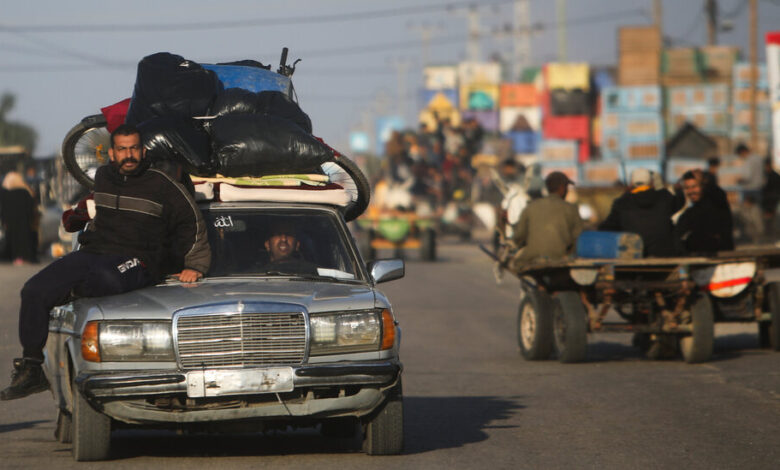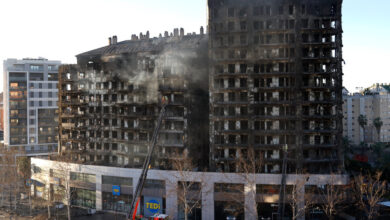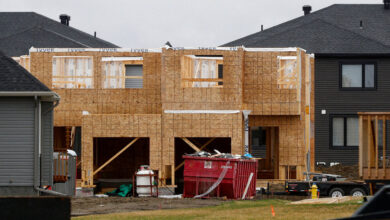
[ad_1]
Faced with fierce fighting in the south of Gaza, large numbers of civilians have fled to a tiny seaside village where Israel has said they can find safety. Its name is Al-Mawasi — and once there, Gazans have found no shelter, no humanitarian and little in the way even of basic infrastructure.
Yousef Hammash, an employee of the Norwegian Refugee Council, was among those who went to the village. He and his family had been in Khan Younis, where intense urban combat has raged in recent days. When they arrived, he said, they found little more than a barren open-air area where people were struggling to build makeshift shelters.
“Hundreds of thousands of people from Khan Younis have fled to Al-Mawasi and Rafah,” Mr. Hammash said, referring to the nearby town on the border of Egypt. “It turned from an empty land into a very, very crowded area.”
The exact number of people who have fled in recent days could not be confirmed, but on Sunday, Israel called for the evacuation of roughly 20 percent of Khan Younis’s land area, home to more than 620,000 people, according to the United Nations.
By the start of this week, the U.N. said, nearly 85 percent of the population of Gaza, roughly 1.9 million people, had fled their homes during the war, which began on Oct. 7. Many of them left the north before Israel’s ground invasion there.
Mr. Hammash said people in Al-Mawasi were building shelters out of material like wood and plastic that offered meager barriers against the elements.
“It doesn’t give any kind of protection, but it gives them a sense of safety,” said Mr. Hammash, who was building a shelter of his own. “The challenge is to cover your head from the harsh weather that is coming, because the winter is about to arrive.”
Another Gazan, Mohamed Hamdan, said he thought the conditions were especially hard for women and children, many of whom were falling ill.
“There are so many hardships here,” Mr. Hamdan said. “There is no water, no food, nothing to drink. Everything is hard here.”
Al-Mawasi is roughly half a mile wide and nine miles long, and was once a Bedouin enclave in one of the Israeli settlements that Israel dismantled in the Gaza Strip in 2005.
Israel began urging Gazans to seek safety there early in the war, releasing videos in both Arabic and English, as well as maps labeled with the name of the village in both languages in mid-October.
“To the people of the Gaza Strip and Gaza City, I beseech you all and tell you all, leave your homes,” one video said in Arabic, as a map of Al-Mawasi flashed on the screen. “If necessary, international humanitarian aid will be sent there.”
Masa’ad Abu Jalhum, a Gaza City resident who was interviewed by Sky News in Al-Mawasi on Wednesday, described a chaotic and crowded scene, with people traveling on foot, by car and by horse-drawn cart with whatever belongings they could carry.
“We arrived here and everybody was here,” said Ms. Abu Jalhum, who was interviewed with a child in her lap. “Where did all these people come from? It was like the Day of Reckoning, when everyone has risen from the dead.”
Unilaterally declared “safe zones” in Gaza like Al-Mawasi have been opposed by the United Nations, which says that unless all parties agree to their creation, they have the potential to “create unacceptable harm for civilians including large scale loss of life.”
In Washington, a senior administration official said the Biden administration believed that Israel was not compelling people to move to Al-Mawasi, and that it had been mentioned as one area where the Israeli military would not be operating. The official said there were several potential evacuation sites in addition to Al-Mawasi.
But with large areas of the Gaza Strip now under an evacuation order from the Israeli military, there are few places for Gazans to go. And many places they have been instructed to go to have themselves been bombed.
Ameera Harouda contributed reporting.
[ad_2]
Source link




